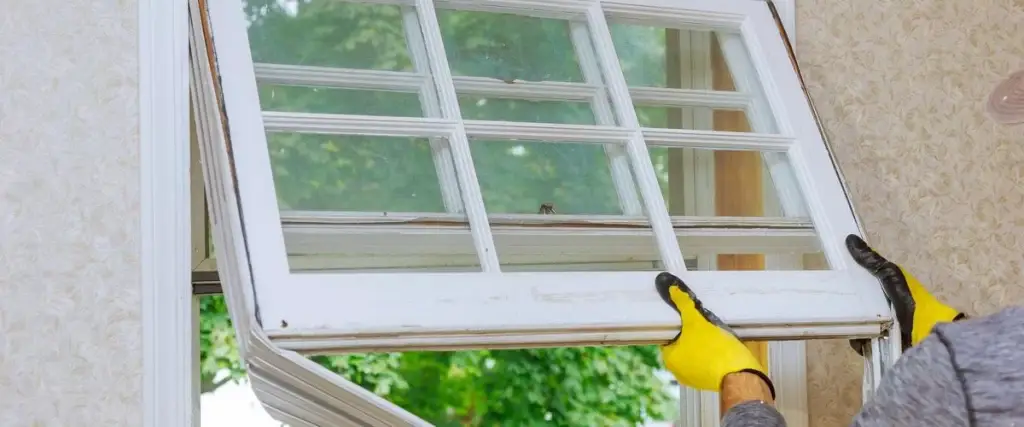Older homes in Madison have charm and challenges. Removing old windows in homes built before 1978 can stir up dangerous lead dust. You care about your family’s safety and preserving that historic character. Let’s walk through what you need to know to handle this the right way.
Madison’s climate swings from freezing winters to humid summers, making window integrity essential. Plus, our local history means many homes pre‑1978 may still have lead-based paint. Federal rules require specific steps when disturbing painted surfaces in these homes, so let’s dig into safe, effective removal methods.

Why Was 1978 a Turning Point?
Homes built before 1978 often used lead-based paint. Lead didn’t phase out fully until then. That means your charming bungalow or classic colonial might have old paint layers with lead underneath. Lead dust is invisible but harmful, especially to kids’ developing brains. That’s why safe window removal isn’t just good care, it’s essential.
What the Lead Renovation, Repair & Painting (RRP) Rule Means for You
If you disturb painted surfaces in pre-1978 homes, professionals must follow the EPA’s RRP Rule. That includes containing the area, avoiding high-dust methods, thorough cleaning, and proper disposal. Even as a homeowner, following these standards protects your family and keeps you on the right side of the law.
Step-by-Step Safe Window Removal
1. Identify Lead-Based Paint
Don’t guess, test. Use EPA-accredited testing tools or hire a certified inspector. Assume lead unless proven otherwise. It’s safest, especially if your home was built before 1978.
2. Contain the Work Area
Seal off with plastic sheeting at least 6 mil thick. Close windows, vents, and doors. Create a clean entry/exit point to limit dust spread.
3. Use Safe Removal Methods
Avoid dry scraping, sanding, or heat guns. Instead, mist paint with water, gently scrape softened paint, and remove window units intact.
4. Keep It Wet & Minimize Dust
Regularly spray surfaces to keep dust down. Use shrouded tools or manual methods, no dry power tools.
5. Clean Thoroughly
Vacuum with a HEPA filter, wipe all surfaces with damp cloths, and repeat cleaning until no visible dust remains.
6. Dispose of Waste Safely
Seal paint chips, old glass, and debris in heavy-duty bags. Label and follow local waste rules, don’t just toss in regular trash.

Local Climate & Historic Considerations
Madison gets cold winters and humid summers. Old windows are key to energy efficiency and preventing moisture damage. Removing and replacing them correctly protects your home year-round. Historic districts require matching designs; your new windows should complement the original style, not clash.
Tools & Supplies You’ll Need
- EPA-approved lead test kit or certified inspector
- 6-mil plastic sheeting, strong tape
- N-100 respirator, gloves, disposable coveralls
- Misting spray bottle
- Manual scrapers, screwdrivers
- HEPA vacuum and damp cloths
- Heavy-duty trash bags for hazardous waste
Common Mistakes to Avoid
- Skipping containment. Dust easily spreads throughout a home without barriers.
- Using improper tools. Heat guns and power sanders stir up dangerous dust
- Ignoring post-clean testing. Dust may appear gone, but a lead test can reveal hidden risks.
Advantages of Doing It Right
- Safety first: No lead dust in your home after the job.
- Energy savings: Better seals help with insulation and lower bills.
- Preserve value: Respect historic listing or neighborhood look.
- Compliance: You meet both EPA and local regulations—peace of mind for your family and potential future sale.
Best Window Brands for Replacement
We use only top-rated manufacturers known for quality and compatibility with older homes:
- Pella: Durable, classic designs that match historic styles.
- Andersen: Solid reputation, wide style range, and energy efficiency.
- Marvin Crafts custom windows that complement older home architecture.

Our Experience Matters
We’ve been safely removing and replacing windows in pre‑1978 homes for years. Working with experts like ours saves you time, money, and hassle. Ready to get your window replacement project started? Contact us at (615) 861-2315.
Frequently Asked Questions
Do I really need lead testing before window removal?
Yes. Testing tells you if standard safe methods apply or if stricter containment is needed to protect your family.
Can I do this myself if I follow EPA guidelines?
Yes, homeowners can DIY, though certification isn’t required. Still, follow step‑by‑step instructions to minimize risk.
How long does the process take?
For a standard window, setup to cleanup typically takes a few hours. Full home projects depend on the window count.
Will it damage my home’s wood or trim?
If done carefully, no. We use gentle removal methods to preserve frames and historic details.
Do I need special disposal for old windows?
Yes. EPA advises sealing lead debris and disposing per local hazardous waste rules, not curbside.
Will replacement help with energy bills?
Absolutely, modern windows seal better, reducing heat loss and lowering monthly heating/cooling expenses.
Do local historic rules restrict window style?
Often yes. Match new windows to the original size and style to stay compliant in historic districts
Is there a follow-up to check for lead residue?
Yes. Clearance testing with dust wipes ensures no toxic lead remains before you reoccupy.
Get Your Project Started Today
Ready to replace old windows safely and stylishly? Contact us at (615) 861-2315 for your window replacement project. Our trained team will guide you from lead testing to cleanup, ensuring comfort, safety, and pride in your home.
